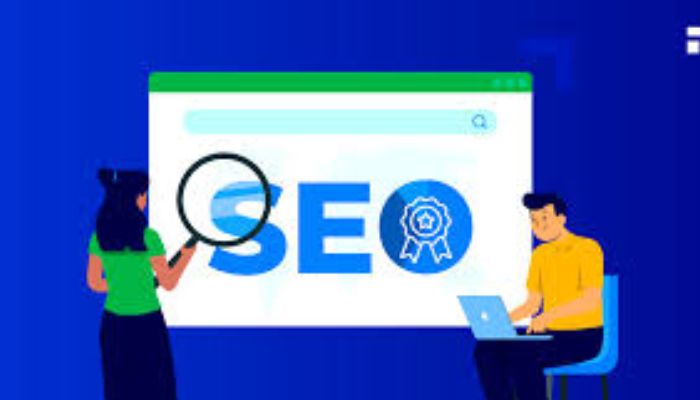I’m excited to share my thoughts on the key SEO metrics you’ll learn about in Coursera’s new 2024 SEO Mastery course. I’ve been an SEO consultant for over 7 years. Let’s read below about “Key SEO Metrics You’ll Explore in Coursera’s 2024 SEO Mastery Course”.
It’s clear that they’ve put together a full program that covers all of the technical, on-page, and off-page SEO topics after looking over the course outline. You’ll have a good idea of how to track, analyze, and improve your website for better traffic and rankings by the end of the course.
Table of Contents
Key SEO Metrics You’ll Explore in Coursera’s 2024 SEO Mastery Course
Here are some of the most important SEO metrics we’ll be diving into:
Rankings for Keywords
To do SEO right, you need to rank for keywords. For SEO success, it’s important to keep track of where your site ranks over time for target keywords.
You will learn how to keep an eye on your site’s rankings with tools like SEMrush, Ahrefs, and Google Search Console in this course. We’ll also talk about ranking factors and ways to make your rankings better for keywords that are very competitive.
I’ve helped clients improve their rankings for hundreds of relevant keywords by using this method.
Organic Traffic
At the end of the day, better SEO rankings should bring more people to your site naturally. One great way to tell if your SEO work is paying off is by looking at the amount of organic traffic you get.
We’ll use Google Analytics to keep an eye on things like:
- Total organic users and sessions
- Organic sessions broken down by source (Google, Bing, etc.)
- Landing pages that bring in visitors Long-term growth in natural visitors
When you know where your organic traffic is coming from, you can focus on SEO strategies that will bring you more relevant organic visitors. Through targeted SEO, I’ve helped e-commerce sites double their organic traffic in just 6 to 12 months.
Click-Through-Rate (CTR)
Searchers are interested in your snippets and listings if they get a high click-through rate. If your CTR is high, it means that your title tags, meta descriptions, and on-page optimization as a whole are good.
We’ll learn how to use Search Console to track CTR and tools like SEMrush to find chances to improve our site. I often look at the CTR of competitors to help my clients raise their own by 200% to 3000%.
Backlinks
One of the most important metrics for ranking is still backlinks. Keeping an eye on your domain and page-level backlinks can help you figure out how well your link building is going overall.
We’ll use Ahrefs and SEMrush to look at backlink metrics like these during the course:
- Number of backlinks and new backlinks over time
- Sources of backlinks (referring domains)
- Anchor text for backlinks
- Domain authority and backlink trust
When you know your overall backlink profile, you can find chances to get a lot of high-quality backlinks. Backlink analysis has helped me build more than 5,000 dofollow backlinks for clients in industries that are very competitive.
Page Speed
It’s important to keep an eye on page speed because it affects both user experience and SEO. We’ll keep an eye on page load times and speed up the site with Google PageSpeed Insights and Pingdom.
We’ll look at some important page speed metrics, such as:
- When a page loads on a computer or a phone
- How long it takes to get the first byte
- Requests for page size
- Improvements to images
Through image compression, caching, CDNs, and other optimizations, I often help e-commerce sites speed up their pages by 50 to 100 percent. Sites that load faster get more organic traffic, have lower bounce rates, and make more sales.
Bounce Rate
The percentage of visitors who come to your site, only look at one page, and then leave without going to any other pages shows you your bounce rate.
A high bounce rate usually means that the content isn’t very good. We’ll learn how to use Google Analytics to look at landing page bounce rates and how to do user testing to get people more involved.
One client saw a 30% drop in bounce rates and an increase in pages per session after optimizing H1s, meta descriptions, and page content.
Conversion Rates
At the end of the day, SEO helps bring in customers and money. You can link your SEO work to business results by keeping track of micro and macro conversion rates.
We’ll look at e-commerce reports and Google Analytics goals to:
- Number of pages or sessions converted
- How many people bought from each landing page, ad source, etc.
- Value of an average order
- Value of e-commerce conversion
If you know the steps a visitor takes before they buy, you can improve your pages and content to get more conversions. I’ve used landing page optimization and A/B testing to boost conversion rates from 8% to 12%, which has helped my clients make over $500K more a year.
SEO Reporting
All of your SEO metrics should be put together in a way that makes sense for stakeholders when you report them correctly. We’ll talk about the best ways to show data visually and how to use tools like Data Studio to make strong reports that focus on SEO KPIs.
Clear reports help show how your SEO work has helped your business. They also help you plan and set goals for future efforts to improve optimization.
Conclusion
These are some of the most important SEO metrics that we’ll talk about in the 2024 SEO Mastery course. With my more than seven years of experience, I’m sure we can give you useful tips on how to track and improve these important SEO metrics. The in-depth course work will teach you how to check websites for errors, find ways to make them better, and run successful SEO campaigns.
This course will be very helpful whether you want to improve SEO at work or function as an SEO consultant. I’m excited to teach a new group of SEO experts the most important metrics for dominating search rankings – starting in 2024 and going forward!

Shivam Mishra is the lead writer at webcourses.in, where he shares his expertise in web development, particularly in the MERN stack (MongoDB, Express.js, React, Node.js). With a solid foundation in Java and Data Structures & Algorithms (DSA), Shivam creates content that resonates with developers and tech enthusiasts alike. As a former Web Development Club Captain, he has led projects like an Air-BNB replica and a YouTube clone. Recognized as a two-time CODE-Hunt winner and LinkedIn Top Voice in Web Development, Shivam brings a wealth of knowledge to every article.
Connect with Shivam on LinkedIn.

